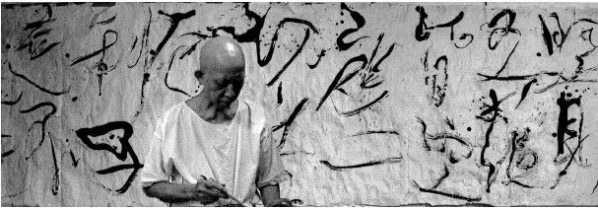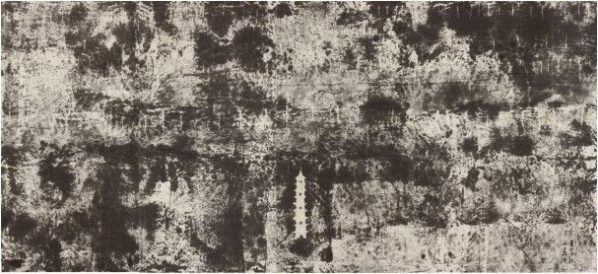
Hanart TZ Gallery is honoured this April to present “A Singular Life: Yeh Shih-Chiang” the first solo exhibition at the gallery of works by the Taiwanese master painter and calligrapher, Yeh Shih-Chiang.
Yeh Shih-Chiang settled in Taiwan in 1949 after first visiting the island as an art student from Guangzhou. This was a time when many Taiwanese artists were coming into contact with Western Post-War modernism, which inspired them to embark on an intensive period of experimentation, seeking for a new language of Chinese ‘modernism’ with ink painting as its basis. Yeh Shih-Chiang was not interested in becoming simply a follower of new Western trends, and at the same time he also was averse to being trapped within the confines of the national "guohua" painting style. In a sense one could say he was avoiding the ideological impasse represented by the two sides of the Cold War. Ultimately he found his solution in a return to the pure and eternal realm of art, taking elements he found compelling from both modern and traditional languages as he developed his own painting practice. His strong, iconoclastic personality and his solitary nature fuelled his ability to break the rules and create his own artistic path. While he refused submitting to constraints of the academy system, he also rejected the art market and the bureaucracy of exhibitions. The intense singularity of Yeh Shih-Chiang’s art has won devoted followings among connoisseurs in the inner circles of the art world. His artistic practices highlight unresolved problems in China’s modern art historical discourse, in particular issues dealing with national culture and the modern nation-state, and the role of the artist under siege of ideologies (from either the left or the right). Yeh took China’s modern experiment into new trajectories, and one might go so far as to claim that his artistic position, developed over his years in mainland China and Taiwan, challenges the mainstream art historical narrative based on modern nation-state discourse, particularly that of the post-War era, opening up a fruitful new ground for research.

Yeh Shih-Chiang, Pagoda Undated; Ink on paper, 137x299cm; Image Courtesy of Hanart TZ Gallery
About the artist
YEH Shih-Chiang (1926-2012)
Born in Guangdong province in 1926, Yeh Shih-Chiang studied at the Guangzhou College of Art, headed at that time by artist and revolutionary Gao Jianfu, who was a pioneer in the revitalization of the traditional ink painting language in the Republican era. At the age of 22, Yeh and his fellow students Yang Zhiguang and Jiang Jianfei were granted permission by Gao Jianfu to take leave from the Academy and set out on an adventure to travel on foot from Guangdong to the Dunhuang Caves, sketching along the way. With the spread of China’s Civil War, they were forced to abort their plans and redirected their route to Taiwan. While Yang Zhiguang found a return passage home, where he eventually became a leading artist in China's Socialist movement, Yeh did not have the necessary resources and remained in Taiwan. In his first few years there Yeh studied fine arts at the Taiwan Provincial Teachers’ College (now National Taiwan Normal University) in Taipei, where his talent and originality as a painter were immediately recognized. However, as time passed and the political rift between Taiwan and the PRC made return to his home impossible, Yeh grew increasingly reclusive and finally shunned official art circles to seclude himself in the countryside, where he lived a simple, ascetic life, practicing Zen Buddhism, teaching and painting. Every aspect of Yeh’s daily activities was informed by a conscious awareness of the ideal of inner cultivation shared by both the literati and Zen traditions. In 1975 he learned to craft traditional guqin instruments, and began to practice this as his main art form. Gradually, inspired by the purity of his Zen practice and simplyet uncompromising way of life, he entered into a new creative period, creating a range of paintings and calligraphies marked by a pure fluidity of line and a dynamic inner power. He is especially admired for the spontaneous fluid energy of line and a visionary purity of composition. Yet he was not a participant in any local modern art movements, instead developing his artistic persona on his own ground and attracted many disciples. Yeh has a devoted following among collectors, artists and scholars in Taiwan and is regarded as a kind of sage among painters. Yet during his lifetime Yeh desisted from bringing his works into the larger public sphere and it was considered a privilege to be able to see his works in exhibition.
About the exhibition
Date: April 21 – June 4, 2016
Opening: April 21, 2016, 18:00
Venue: Hanart TZ Gallery
Courtesy of the artist and Hanart TZ Gallery.




























